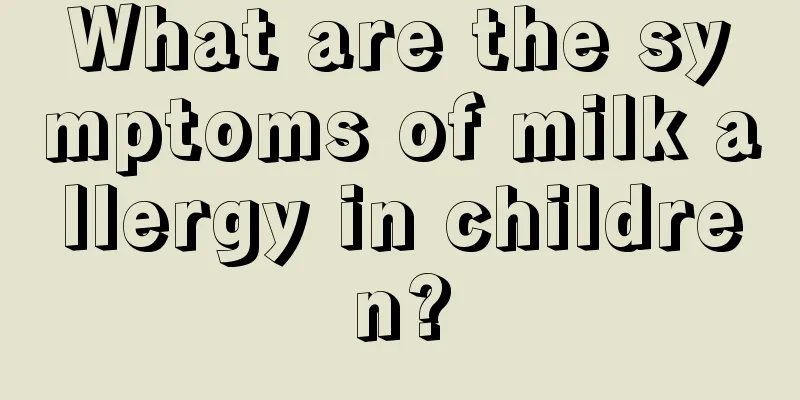Clinical manifestations of neonatal bronchopneumonia

|
Bronchopneumonia is a common disease in newborns, and is generally more common in infants under 2 years old. The disease develops rapidly, often leaving parents at a loss as to what to do. For this disease, the patient should be sent to the hospital for treatment in time. So, what are the clinical manifestations of neonatal bronchopneumonia? If you want to know the answer, please read the following carefully! (I) Mild respiratory symptoms, mainly affecting the respiratory system. Most cases have an acute onset, with fever, cough, and shortness of breath as the main symptoms. ① Fever: Fever types vary. Premature infants and severely malnourished infants may not have fever or even a rise in body temperature. ② Cough: Frequent, initially irritating and dry cough, followed by cough with sputum, and foaming at the mouth in newborns and premature infants; ③ Shortness of breath: common after fever and cough, the respiratory rate is 40-80 times per minute, the nostrils are flaring, and in severe cases, the patient has a nodding breathing, three-depression sign, and cyanosis around the lips. Pulmonary signs: not obvious or rough breath sounds in the early stage, but later fixed medium and fine moist rales can be heard, and percussion is normal. If the lesions fuse and expand, corresponding signs of pulmonary consolidation will appear. In severe cases, in addition to the respiratory system, other systems are also affected, resulting in a series of corresponding clinical manifestations. (ii) Common circulatory system diseases include myocarditis and heart failure. The former is manifested by pale complexion, tachycardia, dull heart sounds, arrhythmia, and electrocardiogram showing ST segment depression and flat and inverted T waves. In heart failure, there are: ① Heart rate suddenly > 130 beats/min; ② The breathing suddenly speeds up to >60 times/min; ②Sudden extreme irritability, obvious cyanosis, pale and gray complexion, and prolonged filling time of nail capillaries; ④ Low and dull heart sounds, gallop rhythm, and distended jugular veins; ⑤ Rapid enlargement of the liver; ⑥ Oliguria or anuria, edema of the face, eyelids or lower limbs. If the first 5 items are present, heart failure can be diagnosed. Microcirculatory disorders may also occur in severe Gram-negative bacterial pneumonia. Through the above introduction, I believe you already know the clinical manifestations of neonatal bronchopneumonia! If a child is found to have the above symptoms, he or she should be sent to the hospital for treatment in time to avoid the situation from getting worse. Bronchopneumonia is very harmful to children and may even affect their normal development, so parents must pay attention to their children's every move. |
<<: What are the symptoms of muscle soreness in children?
>>: Does O-shaped legs affect children's height?
Recommend
What toothpaste is good for children? How to choose
Toothpaste is an everyday necessity in our lives....
Why does the baby fart so hard?
Farting is a normal physiological phenomenon that...
What to do if your two-year-old baby cries while sleeping at night
My child is just two years old. He didn't cry...
The little boy has a urinary tract infection. Do you know what this is?
It is not common for little boys to have urinary ...
Correct way to massage for indigestion in children
Children at home are treasures. Do you know the c...
The importance of early childhood education
From the moment the baby is born, every parent ho...
What is the treatment for appendicitis in children?
Sometimes children will suddenly have stomachache...
Can the vaccination of newborn babies be postponed after 30 days?
I believe many people know that newborns are very...
What should I do if children have blister-type athlete’s foot?
Nowadays, many children wear bought shoes, especi...
What causes effusion in children?
Moreover, there are many types of effusion diseas...
What can children eat to stimulate their appetite?
If children do not eat, it will be difficult for ...
Can babies with roseola be blown dry?
Parents are very protective of their infants and ...
Children have teeth growing on their gums. Parents, please see what to do!
Nowadays, many parents will find that the roots o...
Red urine in newborns
Newborn babies may face many problems, which make...
What causes baby's bones to crack?
Every parent hopes that their child can grow up h...









